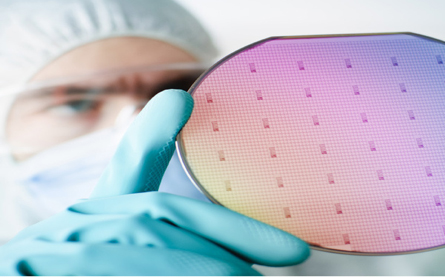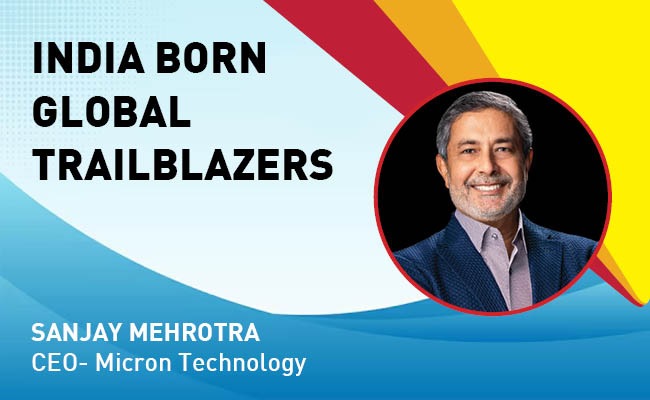Cerebras Systems unveils 1.2 trillion transistor processor for AI
By MYBRANDBOOK

Cerebras Systems is making wafer-scale AI chips.
New artificial intelligence company Cerebras Systems is unveiling the largest semiconductor chip ever built. The Cerebras Wafer Scale Engine has 1.2 trillion transistors, the basic on-off electronic switches that are the building blocks of silicon chips. Intel's first 4004 processor in 1971 had 2,300 transistors, and a recent Advanced Micro Devices processor has 32 billion transistors. Samsung has actually built a flash memory chip, the eUFS, with 2 trillion transistors. But the Cerebras chip is built for processing, and it boasts 400,000 cores on 42,225 square millimeters.
It is 56.7 times larger than the largest Nvidia graphics processing unit, which measures 815 square millimeters and 21.1 billion transistors. The WSE also contains 3,000 times more high-speed, on-chip memory and has 10,000 times more memory bandwidth.
Most chips are actually a collection of chips created on top of a 12-inch silicon wafer and are processed in a chip factory in a batch. But the Cerebras Systems chip is a single chip interconnected on a single wafer. The interconnections are designed to keep it all functioning at high speeds so the trillion transistors all work together as one. In this way, the Cerebras Wafer Scale Engine is the largest processor ever built, and it has been specifically designed to process artificial intelligence applications. The company is talking about the design this week at the Hot Chipsconference at Stanford University in Palo Alto, California.
The WSE also contains 3,000 times more high-speed, on-chip memory and has 10,000 times more memory bandwidth. Chip size is profoundly important in AI, as big chips process information more quickly, producing answers in less time. Reducing the time to insight, or “training time,” allows researchers to test more ideas, use more data, and solve new problems.The chip comes from a team headed by Andrew Feldman, who previously founded the micro-server company SeaMicro, which he sold to Advanced Micro Devices for $334 million. Sean Lie, cofounder and chief hardware architect at Cerebras Systems, will provide an overview of the Cerebras Wafer Scale Engine at Hot Chips. The Los Altos, California company has 194 employees.
Google, Facebook, OpenAI, Tencent, Baidu, and many others argue that the fundamental limitation of today’s AI is that it takes too long to train models. Reducing training time thus removes a major bottleneck to industrywide progress.
Cerebras has designed its chip to be redundant, so one impurity won’t disable the whole chip. It has designed in so uniqueness that, “Designed from the ground up for AI work, the Cerebras WSE contains fundamental innovations that advance the state-of-the-art by solving decades-old technical challenges that limited chip size — such as cross-reticle connectivity, yield, power delivery, and packaging,” said Feldman, who cofounded Cerebras Systems and serves as CEO, in a statement. “Every architectural decision was made to optimize performance for AI work. The result is that the Cerebras WSE delivers, depending on workload, hundreds or thousands of times the performance of existing solutions at a tiny fraction of the power draw and space.”
These performance gains are accomplished by accelerating all the elements of neural network training. A neural network is a multistage computational feedback loop. The faster inputs move through the loop, the faster the loop learns, or “trains.” The way to move inputs through the loop faster is to accelerate the calculation and communication within the loop.
“Cerebras has made a tremendous leap forward with its wafer-scale technology, implementing far more processing performance on a single piece of silicon than anyone thought possible,” said Linley Gwennap, principal analyst at the Linley Group, in a statement. “To accomplish this feat, the company has solved a set of vicious engineering challenges that have stymied the industry for decades, including implementing high-speed die-to-die communication, working around manufacturing defects, packaging such a large chip, and providing high-density power and cooling. By bringing together top engineers in a variety of disciplines, Cerebras created new technologies and delivered a product in just a few years, an impressive achievement.”
With 56.7 times more silicon area than the largest graphics processing unit, Cerebras WSE provides more cores to do calculations and more memory closer to the cores so the cores can operate efficiently. Because this vast array of cores and memory is on a single chip, all communication is kept on-silicon, which means its low-latency communication bandwidth is immense, so groups of cores can collaborate with maximum efficiency.
The 46,225 square millimeters of silicon in the Cerebras WSE contains 400,000 sparse linear algebra cores, 18GB of total on-die memory, 9PB/sec worth of memory bandwidth across the chip, and separate fabric bandwidth of up to 100Pbit/sec. The entire chip is built on TSMC’s 16nm FinFET process. Because the chip is built from (most) of a single wafer, the company has implemented methods of routing around bad cores on-die and can keep its arrays connected even if it has bad cores in a section of the wafer. The company says it has redundant cores implemented on-die, though it hasn’t discussed specifics yet. Details on the design are being presented at Hot Chips this week. Cerebras WSE’s is a world record-breaking achievements would not have been possible without years of close collaboration with TSMC, the world’s largest semiconductor foundry, or contract manufacturer, and leader in advanced process technologies, the companies said. The WSE is manufactured by TSMC on its advanced 16nm process technology.
“We are very pleased with the result of our collaboration with Cerebras Systems in manufacturing the Cerebras Wafer Scale Engine, an industry milestone for wafer scale development,” said J.K. Wang, TSMC’s senior vice president of operations. “TSMC’s manufacturing excellence and rigorous attention to quality enable us to meet the stringent defect density requirements to support the unprecedented die size of Cerebras’ innovative design.”
Cores and more cores

An example of a silicon wafer, which is sliced into individual chips.
The WSE contains 400,000 AI-optimized compute cores. Called SLAC for Sparse Linear Algebra Cores, the compute cores are flexible, programmable, and optimized for the sparse linear algebra that underpins all neural network computation. SLAC’s programmability ensures cores can run all neural network algorithms in the constantly changing machine learning field.
As the graphics processing units and tensor processing units are dense execution engines — engines designed to never encounter a zero — they multiply every element even when it is zero. When 50-98% of the data is zeros, as is often the case in deep learning, most of the multiplications are wasted. Imagine trying to run forward quickly when most of your steps don’t move you toward the finish line. As the Cerebras Sparse Linear Algebra Cores never multiply by zero, all zero data is filtered out and can be skipped in the hardware, allowing useful work to be done in its place.
Typical messages traverse one hardware link with nanosecond latency. The aggregate bandwidth across a Cerebras WSE is 100 petabits per second. Communication software such as TCP/IP and MPI is not needed, so their performance penalties are avoided. The energy cost of communication in this architecture is well under 1 picojoule per bit, which is nearly two orders of magnitude lower than in graphics processing units. With a combination of massive bandwidth and exceptionally low latency, the Swarm communication fabric enables the Cerebras WSE to learn faster than any currently available solutions.
"


Nazara and ONDC set to transform in-game monetization with ‘
Nazara Technologies has teamed up with the Open Network for Digital Comme...

Jio Platforms and NICSI to offer cloud services to government
In a collaborative initiative, the National Informatics Centre Services In...

BSNL awards ₹5,000 Cr Project to RVNL-Led Consortium
A syndicate led by Rail Vikas Nigam Limited (abbreviated as RVNL), along wi...

Pinterest tracks users without consent, alleges complaint
A recent complaint alleges that Pinterest, the popular image-sharing platf...


Icons Of India : CP Gurnani
Former Managing Director and CEO of the well-known IT service company ...

Icons Of India : Debjani Ghosh
Debjani Ghosh is the President of the National Association of Software...

ICONS OF INDIA : SUNIL VACHANI
Sunil Vachani is the Chairman of Dixon Technologies (India) Ltd. Under...


GeM - Government e Marketplace
GeM is to facilitate the procurement of goods and services by various ...

TCIL - Telecommunications Consultants India Limited
TCIL is a government-owned engineering and consultancy company...

STPI - Software Technology Parks of India
STPI promotes and facilitates the growth of the IT and ITES industry i...


Indian Tech Talent Excelling The Tech World - Sanjay Mehrotra, CEO- Micron Technology
Sanjay Mehrotra, the President and CEO of Micron Technology, is at the...

Indian Tech Talent Excelling The Tech World - Anirudh Devgan , President, Cadence Design
Anirudh Devgan, the Global President and CEO of Cadence Design Systems...

Indian Tech Talent Excelling The Tech World - PADMASREE WARRIOR, Founder, President & CEO - Fable
Padmasree Warrior, the Founder, President, and CEO of Fable, is revolu...